
Practical Content Version Control for Managers
Content Version Control: Managing Multiple Drafts Without Losing Your Mind
Estimated reading time: 9 minutes
- Content version control prevents confusion and lost work in collaborative environments.
- Consistent naming conventions and version numbering create immediate clarity about drafts and changes.
- Centralized feedback eliminates scattered comments across email, messaging apps, and multiple document versions.
- SOPs and clear boundaries ensure predictable review cycles and reduce overlapping edit chaos.
- Regular, smaller updates are easier to manage and integrate than infrequent massive revision dumps.
Why Content Version Control Actually Matters

I've seen content managers literally crying over lost drafts. One colleague spent three hours recreating edits because someone saved over the wrong file version. This stuff happens more than people admit, and it's completley preventable with proper content version control.
Content version control gives you a systematic way to track every iteration of your documents throughout their entire lifecycle. Instead of ending up with files named "Final_FINAL_v2_ACTUAL_FINAL.docx," you create a structured path where each version builds logically on the previous one. This becomes critical when multiple team members contribute feedback and revisions, because without it, you'll quickly lose track of which document is current.
The real problem kicks in during collaborative workflows. Multiple people work on different versions simultaneously, each person thinking they have the definitive copy. I watched a marketing team publish the wrong version of a press release because three people were editing three different files, and nobody knew which one incorporated the legal team's required changes.
Version control creates clear boundaries between iterations rather than letting chaos reign. Each version exists as a distinct checkpoint, and you always know exactly where you are in the revision process. The cognitive load drops dramatically when you're not constantly wondering "is this the version Sarah reviewed or the one Mike edited?"
Setting Up Naming Conventions That Actually Work

Naming conventions sound boring until you've wasted an hour trying to figure out which of seventeen similarly-named files contains the changes your CEO requested. Trust me, establishing consistent document naming upfront saves massive headaches later.
A robust naming system includes three critical components that work together. First, use the same file name throughout the document's entire lifecycle—don't suddenly switch from "Q4_Marketing_Plan" to "Marketing_Strategy_Q4" halfway through. Second, employ consistent separators between words, whether that's spaces, dashes, or underscores. Pick one approach and stick with it across all projects. Third, apply a standardized version suffix system like v1, v2, v3, or the more detailed v1.0, v1.1, v2.0 format.
Here's what this looks like in practice: Content_Strategy_2024_v1.3.docx immediately tells you this is version 1.3 of the 2024 content strategy document. Anyone on your team can identify the latest version at a glance and understand the document's evolution. The alternative is files like content plan new (2) final edited JM comments.docx where nobody has any idea what they're looking at.
Some teams incorporate additional metadata like dates or status indicators directly into the file name: Website_Redesign_Proposal_2024-03-15_Draft.docx or Blog_Post_AI_Tools_v2.0_InReview.docx. This works well for projects with longer timelines or complex approval processes where you need to immediatly see the document's status.
The key is getting everyone to follow identical naming conventions. When your whole team uses the same system, the cognitive load of tracking versions drops significantly. You're not trying to decode each person's unique filing logic—you just know that v2.1 comes after v2.0, and anything marked "Final" has passed through all approval stages.
Creating Clear Version Boundaries
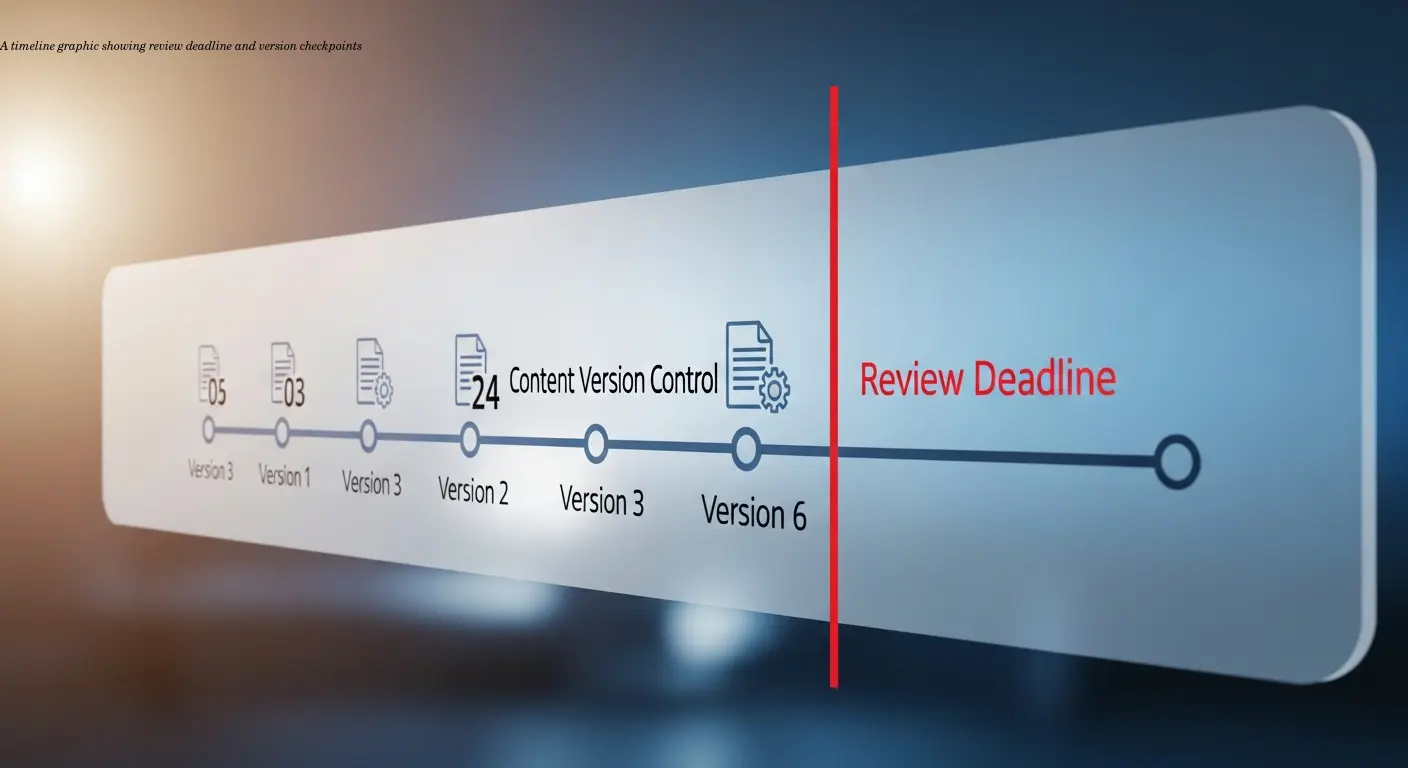
One of the most disruptive problems in content creation happens when feedback and editing cycles blur together without clear demarcation points. I've been in situations where I'm editing version 3 while reviewers are still commenting on version 2, and their feedback references sections I've already rewritten or deleted. It's maddening and completly avoidable.
Drawing distinct lines between versions establishes when feedback stops and editing begins. This prevents reviewers from inadvertently making changes while you're simultaneously working on the next iteration. Without these boundaries, you end up with competing versions that conflict with each other, and reconciling them becomes a nightmare.
Setting feedback deadlines is the first step. When you send out version 2 for review, clearly communicate that all comments are due by Friday at 5pm. This signals to reviewers that feedback submitted after that point won't be incorporated into version 3. I've found that automated reminders as deadlines approach help ensure people actually meet these expectations—otherwise they forget and send you detailed feedback three days after you've already published.
Saving copies before editing is equally essential. Before implementing changes and creating version 3, save version 2 with its proper naming convention intact. This creates a clear checkpoint and prevents accidentally overwriting valuable feedback or intermediate work. I learned this the hard way when I saved over a version that contained my boss's detailed comments, and had to sheepishly ask her to re-review because I'd lost all her notes.
Restricting editing rights provides technical enforcement of version boundaries. By designating yourself as the sole person with editing privileges, you control when changes are made. Reviewers can comment and suggest, but they can't directly modify the document. This prevents well-meaning team members from "quickly fixing" something while you're simultaneously restructuring that entire section.
Centralizing Feedback So Nothing Gets Lost
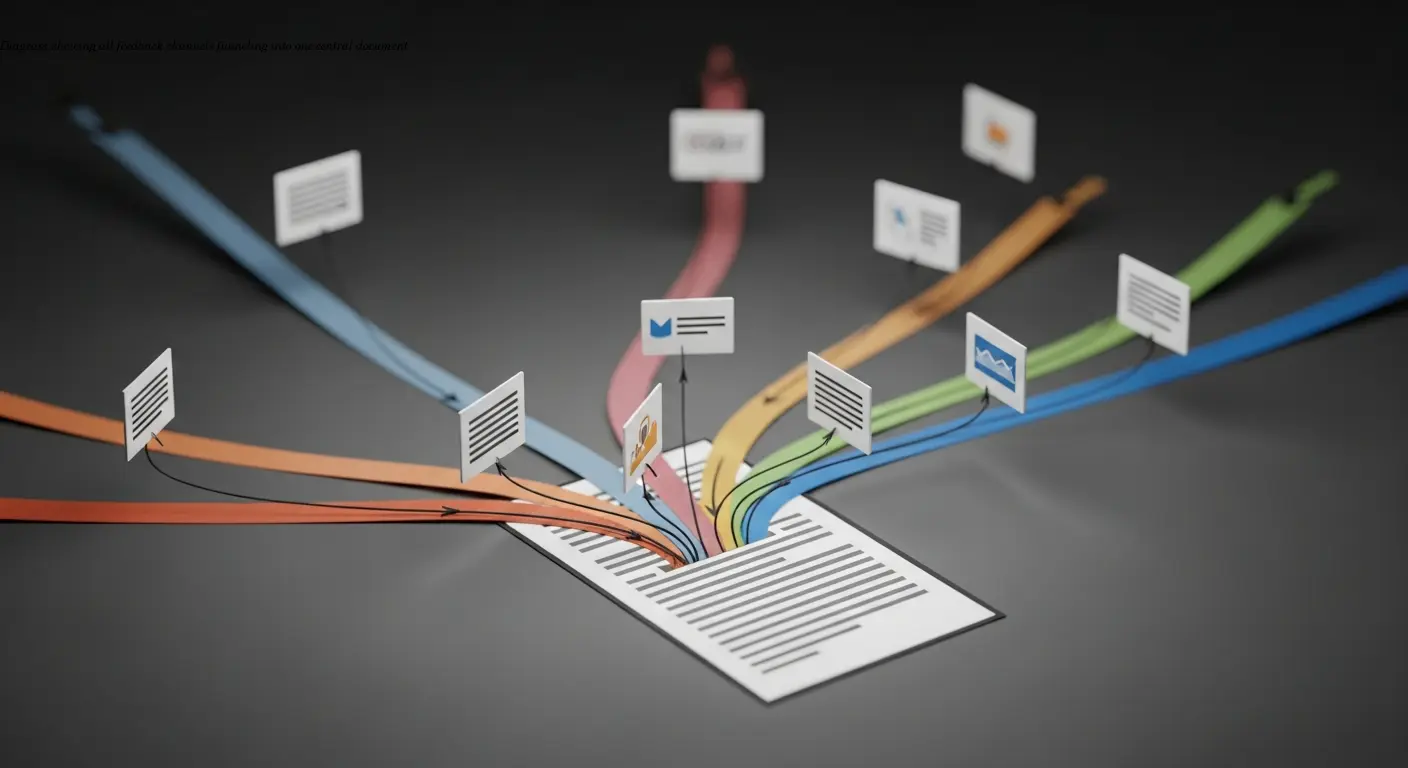
Scattered feedback is the enemy of good version control. I once missed critical legal revisions because they came through Slack while most feedback was in Google Docs, and I simply didn't see the Slack message buried under a hundred other notifications. Centralizing feedback prevents this kind of disaster.
Collaborative workflows function best when feedback exists in a single, unified location rather than spread across multiple platforms or direct messages. This prevents duplicate versions, redundant feedback, and the loss of valuable comments. When you're consolidating input from seven different reviewers, you need a system that captures everything in one place.
Clearly communicate to reviewers where they should submit their input before you even send the document out. Say explicitly: "Please leave all comments directly in the Google Doc—don't email me separate feedback or message me on Slack." Otherwise people will use whatever channel is most convenient for them, and you'll spend hours tracking down scattered comments.
If you're using tools like Google Docs, Microsoft Word, or collaborative PDFs for feedback collection, maintain this critical practice: save a copy of your document before making edits. This preserves the version with all previous feedback intact. Reviewers can then compare the original version with your revised version and verify that their comments were addressed. I create a version called Project_Name_v2_WithComments.docx before resolving comments and creating the clean Project_Name_v3.docx file.
Some review platforms provide built-in version control and comparison features that make this easier. Tools like Filestage or dedicated CMS platforms with revision tracking automatically save each iteration and let reviewers see exactly what changed. These are worth the investment if you're managing complex projects with multiple stakeholders who need to track changes across numerous revision cycles.
Managing Multiple Drafts Without Going Crazy

The psychological burden of managing multiple drafts diminishes significantly when you establish clear, repeatable processes. Instead of trying to remember which version addresses which feedback or manually tracking changes across numerous files, a structured system handles this systematically.
Logical version numbering systems provide immediate clarity about progression. A system like v1.0, v1.1, v2.0 clearly indicates whether a change represents a minor update (1.1) or a more substantial revision (2.0). I use this approach for all content projects: single decimal increases for small edits and corrections, whole number increases for major revisions that restructure content or incorporate significant new material.
Some teams incorporate status indicators into their versioning to create even more context. You might have Content_Brief_v1.0_Draft.docx, then Content_Brief_v1.5_InReview.docx, then Content_Brief_v2.0_Approved.docx. This tells you both the version number and the document's current status in the approval workflow at a glance.
Standard Operating Procedures (SOPs) formalize your versioning approach across your entire team. These documented procedures should specify your naming conventions, version numbering system, review cycles, and archiving protocols. When I onboard new team members, I point them to our versioning SOP, and they immediatley understand how we manage documents. This prevents each person from developing their own ad-hoc system that conflicts with everyone else's approach.
Archiving old versions properly is part of managing multiple drafts effectively. You don't need version 1 through 14 cluttering your active project folder. Create an archive subfolder and move superseded versions there once they're no longer actively referenced. Keep them accessible in case you need to check something, but get them out of the way so you're not accidentally opening an outdated draft.
Supporting Real Collaboration Workflows
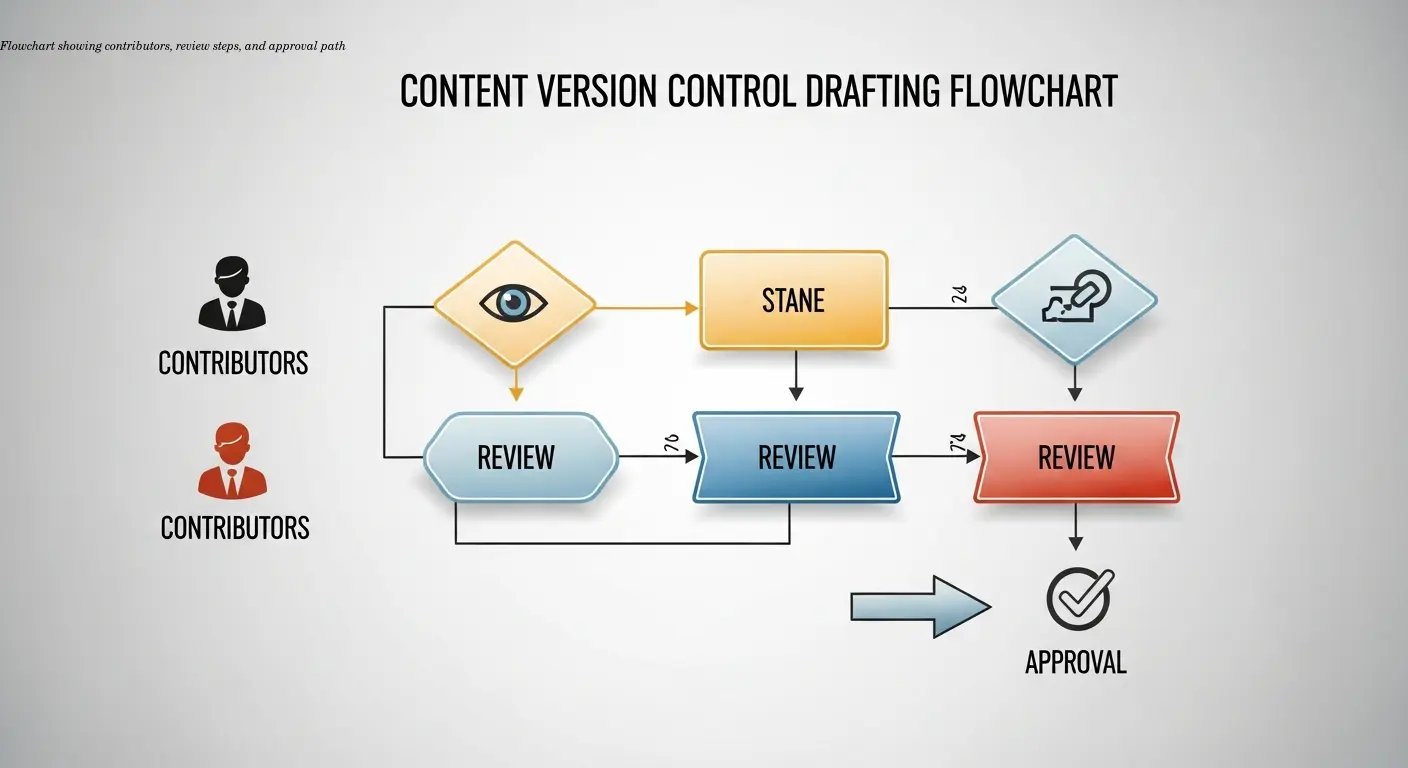
Effective content version control isn't merely about file management—it's about facilitating collaboration without creating friction. Multiple people need to contribute without stepping on each other's work or losing track of who suggested what. This is where text version management becomes critical for team productivity.
Making version comparison easy allows reviewers to quickly see what changed between iterations. When tools provide visual diff capabilities or side-by-side comparisons, reviewers can efficiently verify that their feedback was incorporated and assess the overall direction of revisions. I've found that reviewers are much more engaged when they can easily see their suggestions reflected in the next version—it validates their contribution and keeps them invested in the process.
Implementing review-before-committing workflows applies version control principles from software development to content creation. Before declaring a version "final" or "ready to publish," subject it to review by relevant stakeholders. This additional checkpoint catches errors, ensures quality, and creates accountability. I learned this from working with developers who use Git—they never commit code directly to production without review, and content deserves the same rigor.
Incorporating others' changes frequently rather than batching large update cycles reduces the complexity of merge conflicts and keeps team members aligned. If you're working on a long-form content piece with multiple contributors, regular smaller updates are easier to track, review, and integrate than infrequent massive overhauls. I try to create new versions at natural breakpoints—after addressing one reviewer's complete set of comments, or after finishing revisions to a major section—rather than waiting until I've made dozens of unrelated changes.
Creating a clear approval path as part of your collaboration workflow prevents bottlenecks. Document who needs to review each version and in what order. Maybe the content writer creates v1, the subject matter expert reviews and you create v2, then the legal team reviews and you create v3, then the executive sponsor gives final approval. This sequential approach with defined roles prevents the chaos of everyone reviewing everything simultaneously and providing conflicting feedback.
Common Mistakes That Kill Your Version Control
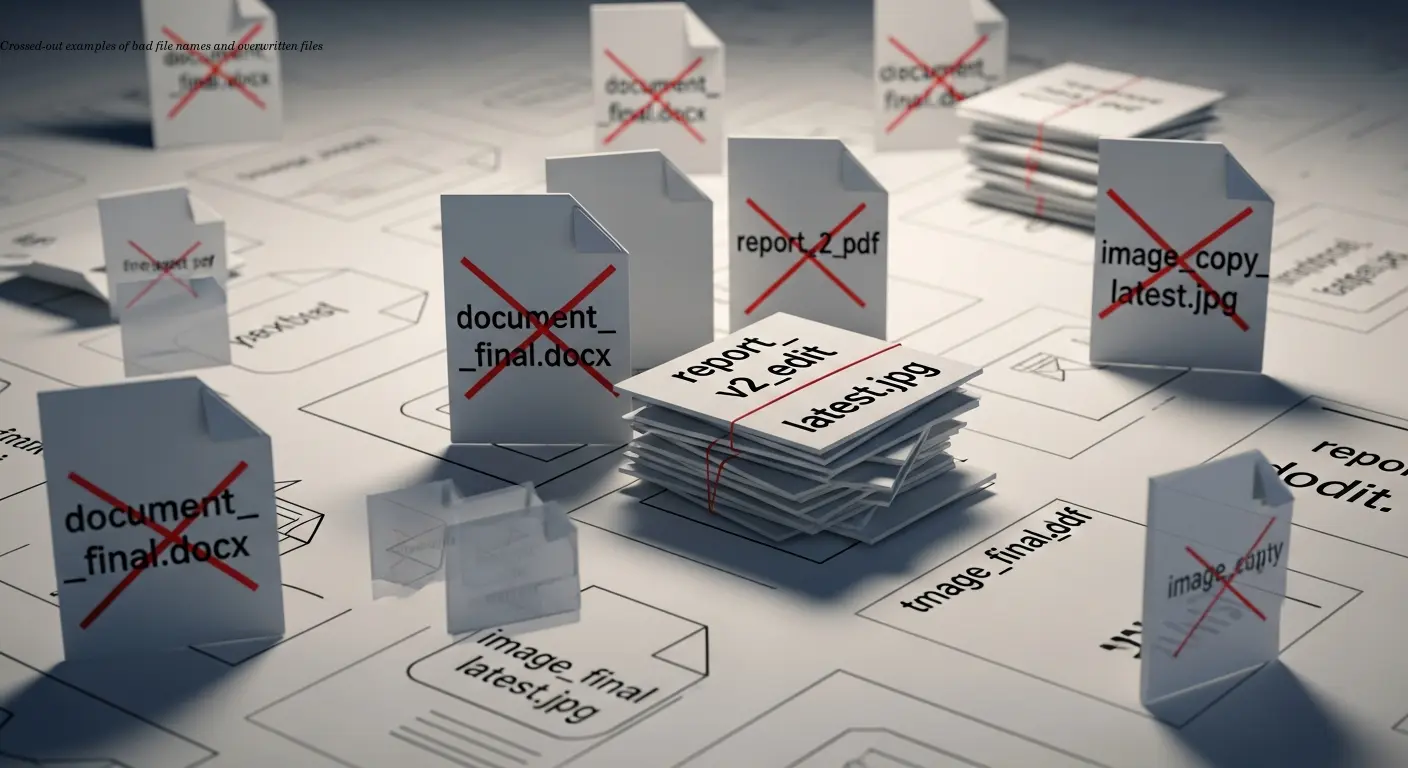
I've made every version control mistake imaginable, so I can tell you exactly what not to do. Never simply save over previous copies or casually update file names without following your established conventions. This erases the historical record and creates ambiguity about which version is authoritative.
I once worked with a content manager who would just keep saving over the same file name, figuring that keeping old versions was unnecessary clutter. Then our CEO asked "what did this section say in the version we reviewed two weeks ago?" and we had no way to answer because that version no longer existed. We'd lost the entire revision history because she prioritized a clean file system over proper versioning.
Avoid indiscriminate commits or bulk changes that combine multiple unrelated modifications into a single version. Each version should represent a logical, coherent set of changes with a clear purpose. If you fix typos, restructure three sections, add new content, and update statistics all in one version jump, nobody can understand what actually changed or why. Break these into separate versions: v2.1 for typo fixes, v2.2 for restructuring, v3.0 for new content and updated stats.
Don't refill or reformat text unnecessarily when making content changes. If you're editing a paragraph for clarity, just edit that paragraph—don't also reflow the entire document or change formatting styles. This creates superficial differences that make it nearly impossible to identify what substantivley changed in a given version. The formatting noise obscures the actual content evolution and creates merge conflicts without legitimate purpose.
Resist the temptation to work outside your version control system. I've seen people create "quick edit" versions or "temp" files to test out ideas, then forget to incorporate those changes back into the main versioned document. These orphaned files cause confusion and duplicate work. If you want to experiment with alternative approaches, create a proper branch or alternate version within your system rather than working in random scratch files.
Building Your Version Control System

You don't need fancy software to implement effective content version control, though dedicated tools certainly help. Start with the basics and build from there based on your team's specific needs and the complexity of your projects.
For simple projects with limited collaboration, a well-organized folder structure with consistent naming conventions might suffice. Create a main project folder with subfolders for different document types or stages. Use your standardized naming convention religiously, and maintain an archive folder for superseded versions. This basic approach works suprisingly well for small teams or individual content managers handling straightforward projects.
As collaboration complexity increases, consider cloud-based platforms that provide built-in versioning. Google Docs, Microsoft 365, and similar tools automatically save version history and allow you to restore previous versions. These platforms also centralize feedback and enable simultaneous viewing (though not simultaneous editing—remember those version boundaries). The automatic versioning provides a safety net even if people don't manually create distinct version files.
For content teams managing complex projects across multiple stakeholders, dedicated content management systems (CMS) with robust revision tracking become valuable. Platforms like WordPress, Contentful, or specialized solutions provide granular version control, approval workflows, comparison tools, and audit trails. These systems track who made what changes when, which becomes critical for compliance and quality assurance in regulated industries.
Some content teams adapt developer tools like Git for document versioning, particularly for markdown files or other text-based content. Git provides incredibly powerful version control capabilities—branching, merging, detailed change tracking—but has a learning curve that can intimidate non-technical team members. If your team includes people comfortable with command-line tools or version control software, this approach offers maximum flexibility and control.
Whatever system you choose, create documentation that explains how your team uses it. Your Standard Operating Procedure should cover naming conventions, version numbering, where files are stored, how feedback is collected, who has editing rights, approval workflows, and archiving policies. Make this documentation accessible and reference it during team training and onboarding. A version control system only works if everyone actually follows it consistently.
FAQ
What's the difference between version control and document management?
Version control specifically tracks different iterations of the same document over time, while document management is the broader practice of organizing, storing, and securing all documents across your organization. Think of version control as a subset of document management—it's the part focused on managing revisions and changes.
How long should I keep old versions?
Keep at least the last 3-5 major versions accessible for reference, and archive older versions rather than deleting them entirely. Storage is cheap, and you never know when you'll need to reference an earlier approach or recover deleted content. For regulated industries, compliance requirements may dictate specific retention periods.
Should I use numbers or dates for version control?
Numbers (v1, v2, v3) work better for most content projects because they clearly indicate progression and are shorter/cleaner in file names. Dates work well for regularly published content like monthly reports where the date is the primary distinguishing factor. Some teams use both: Report_v2.3_2024-03-15.docx.
Can I use version control for images and other media files?
Yes, the same principles apply. Use consistent naming conventions and version numbers for images, videos, and other media. Some specialized tools provide visual diff capabilities for images that highlight what changed between versions, which is useful for design assets.
What version control tools work best for content teams?
It depends on your needs. Google Docs or Microsoft 365 work well for basic collaboration. Dedicated platforms like Filestage or Aproove provide more robust review workflows. Git works great for technical content teams comfortable with developer tools. CMS platforms like WordPress offer built-in revision tracking for published content.
How do I get my team to actually follow version control procedures?
Make it as easy as possible and build it into your regular workflows. Provide templates with proper naming conventions already in place. Create checklists for common tasks that include version control steps. Most importantly, lead by example—if team leadership consistently follows the system, others will too.
What do I do if someone breaks version control and we have conflicting versions?
First, identify which version contains the most recent approved changes. Then manually reconcile differences between conflicting versions, checking with the relevant stakeholders about which changes should be preserved. Use this as a learning opportunity to reinforce why following version control procedures prevents exactly this situation.
Should every tiny edit create a new version number?
No, batch minor corrections into logical groups. Fix all the typos and formatting issues, then increment to v1.1. Make all the revisions from one reviewer's feedback, then increment to v1.2. Save major version number increases (v1 to v2) for substantial revisions that significantly change the content structure or messaging.
Related Articles

Essential proofreading tool to spot version changes
Discover how a proofreading tool and text comparison speed up edits, catch errors, and protect document accuracy—practical tips from experienced editors.
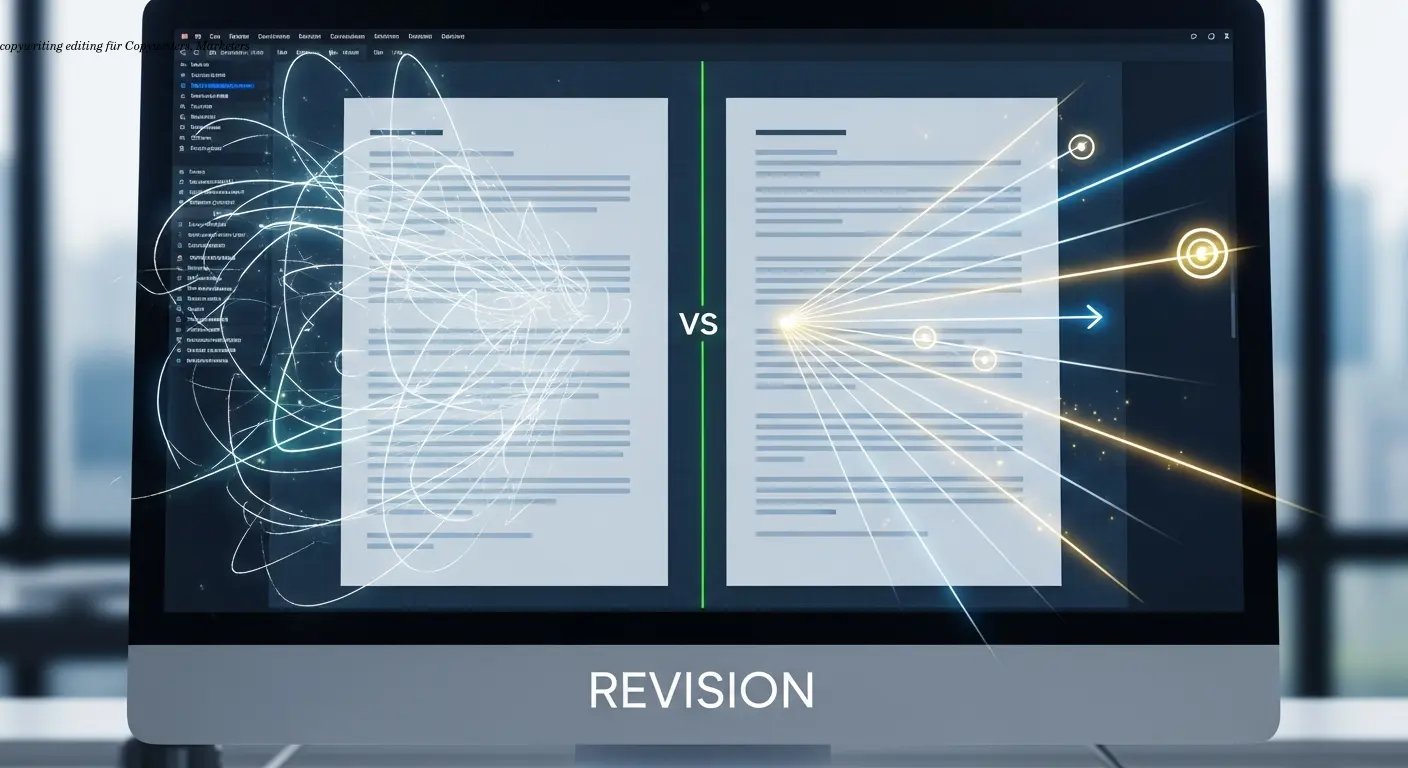
Copywriting Editing Guide to Comparing Drafts Like a Pro
Sharpen copywriting editing with draft comparison, the Four Cs, line edits, version control and A/B testing to deliver clearer, higher-converting copy.

Practical Text Comparison Guide for Content Editors
Master text comparison to catch edits, prevent content drift, and streamline merges. Tips and tool picks trusted by editors, including sportive teams.